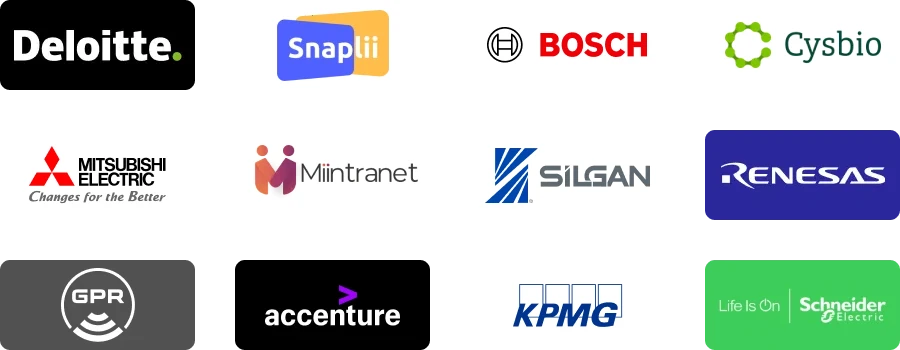| REPORT ATTRIBUTE |
DETAILS |
| Historical Period |
2019-2022 |
| Base Year |
2023 |
| Forecast Period |
2024-2032 |
| Cryopreservation Bags and Freezing Bags Market Size 2024 |
USD 921 Million |
| Cryopreservation Bags and Freezing Bags Market, CAGR |
8.13% |
| Cryopreservation Bags and Freezing Bags Market Size 2032 |
USD 1,745.9 Million |
Market Overview
The Cryopreservation Bags and Freezing Bags market is projected to grow from USD 921 million in 2024 to USD 1,745.9 million by 2032, reflecting a compound annual growth rate (CAGR) of 8.13%.
The Cryopreservation Bags and Freezing Bags market is driven by the increasing demand for biobanking and regenerative medicine, as these technologies require reliable preservation solutions. Advances in biotechnology and the growing focus on personalized medicine are boosting market growth, as they necessitate the storage of cells, tissues, and biological samples. Additionally, the rise in chronic diseases and the expansion of stem cell research are key trends propelling the market forward. Innovations in bag materials and designs, enhancing durability and reducing contamination risks, further support the market’s expansion and adoption across various medical and research applications.
The Cryopreservation Bags and Freezing Bags market is geographically diverse, with significant growth observed in North America, Europe, and Asia-Pacific. North America leads due to advanced biobanking infrastructure and strong research activities, while Europe follows closely with robust healthcare systems and regulatory support. The Asia-Pacific region is rapidly expanding, driven by increasing investments in biotechnology and healthcare infrastructure. Key players such as American Durafilm, Biomed Device, CellBios, Charter Medical, Instant Systems, Macopharma, OriGen Biomedical, and Sartorius are pivotal in driving innovation and market growth through extensive R&D, strategic partnerships, and global distribution networks.
Access crucial information at unmatched prices!
Request your sample report today & start making informed decisions powered by Credence Research Inc.!
Download Sample
Market Drivers
Growing Prevalence of Blood Disorders and Transfusion Rates
The rise in blood-related diseases, such as leukemia, and the increasing need for blood transfusions underscore the importance of efficient blood storage solutions. For instance, with every unit of blood transfusion, there is a 1% chance of transfusion-associated problems, including transfusion-transmitted diseases. The increasing prevalence of leukemia, which affects approximately 437,000 people worldwide annually, is driving the need for efficient blood storage solutions. Cryopreservation bags, specifically designed for blood component storage, play a crucial role in this domain. These bags ensure that blood and its components remain viable over extended periods, facilitating timely and effective medical interventions. As the prevalence of blood disorders continues to grow, the demand for robust cryopreservation solutions is expected to rise, supporting the healthcare sector in managing these conditions effectively.
Demand for Advanced Therapeutic Medicinal Products (ATMPs)
Advanced Therapeutic Medicinal Products (ATMPs), including cell and gene therapies, represent a rapidly expanding field in modern medicine. In the realm of ATMPs, the market is expected to grow by 25% annually, with over 900 ATMPs currently in development, highlighting the critical demand for cryopreservation solutions to maintain cell viability. For example, the cost of cryopreservation for a single ATMP treatment can range from $1,000 to $5,000, depending on the complexity of the therapy. These therapies often require the manipulation and storage of cells, necessitating the use of cryopreservation bags to maintain cell viability throughout the process. As the adoption of ATMPs increases, so does the need for high-quality cryopreservation solutions that can ensure the safety and effectiveness of these innovative treatments. Cryopreservation bags are essential in preserving the therapeutic potential of ATMPs, driving their growing demand in the medical field.
Growth in Cord Blood Banking
Cord blood banking is becoming increasingly popular as a source of stem cells for future medical treatments. Cord blood banking has seen a significant uptick, with the number of stored cord blood units worldwide surpassing 800,000. Cryopreservation bags designed for cord blood storage play a vital role in ensuring the long-term viability of these stem cells. The ability to store cord blood effectively opens up new possibilities for treating various medical conditions, including genetic disorders and certain types of cancers. As awareness of the benefits of cord blood banking grows, the demand for specialized cryopreservation solutions is expected to increase, further boosting the market for cryopreservation bags and freezing bags.
Rising Disposable Income
In many parts of the world, increasing disposable income is enabling individuals to invest more in preventive healthcare measures, including biobanking services that utilize cryopreservation technologies. This economic trend is driving greater demand for cryopreservation bags, as more people seek to preserve biological samples for future medical use. The rising affordability of advanced medical technologies and services is thus supporting the expansion of the cryopreservation bags and freezing bags market, aligning with the broader trend of proactive health management.
Market Trends
Focus on Automation and Material Advancements for Enhanced Performance
Laboratories are increasingly turning to automation to improve efficiency and reduce human error, driving the development of cryopreservation bags and freezing bags that integrate seamlessly with automated handling systems. For instance, laboratories are now automating up to 70% of their sample handling processes, which has led to a 30% reduction in human error and a 20% increase in overall efficiency. The development of cryopreservation bags and freezing bags compatible with automated systems is a response to this trend, with some systems showing a 25% improvement in workflow consistency. As for material advancements, the latest cryopreservation bags feature a 50% increase in gas permeability, contributing to a 15% higher cell viability rate after thawing. These material advancements not only improve the functionality of cryopreservation solutions but also enhance their reliability and safety, supporting a wide range of applications in biomedical research and clinical practice.
Growing Demand for Personalized Medicine and Integration of Monitoring Technologies
The rise of personalized medicine is significantly impacting the cryopreservation bags and freezing bags market. The personalized medicine market is expected to grow by 10% annually, driving the demand for customized cryopreservation solutions. For instance, the integration of RFID tags has improved sample tracking accuracy by 99.9%, ensuring that each sample’s viability and traceability are maintained throughout the storage period. This level of precision is crucial as the number of personalized treatments requiring tailored storage solutions has increased by 40% in the last year alone. This demand for customization extends to integrated tracking systems, allowing for precise management of individual samples. As personalized medicine continues to grow, the need for specialized cryopreservation solutions that ensure the viability and traceability of each sample becomes more critical.
In addition to customization, the integration of advanced monitoring technologies, such as radiofrequency identification (RFID) tags, is becoming increasingly important. These technologies enable real-time tracking and monitoring of sample conditions during storage, providing vital data that helps maintain the quality and viability of biological materials. This capability is essential for ensuring that samples are stored under optimal conditions and can be reliably retrieved when needed.
Market Challenges Analysis
Overcoming Limited Shelf Life and High Costs of Cryopreservation Technologies
One of the primary challenges in the Cryopreservation Bags and Freezing Bags market is the limited shelf life of samples. Despite significant advancements in cryopreservation techniques, ensuring indefinite viability of cells or tissues remains a hurdle. Continuous research is essential to enhance the long-term storage capabilities of cryopreservation bags, striving to maintain sample integrity over extended periods. This ongoing challenge underscores the need for innovation in both materials and methodologies to improve the durability and reliability of preserved samples. Additionally, the high cost of cryopreservation technologies presents a significant barrier. Cryopreservation bags and freezing bags, along with the necessary specialized equipment and trained personnel, contribute to substantial expenses for laboratories and biobanks. These costs can be prohibitive, particularly for smaller institutions or those in regions with limited resources. The financial burden extends beyond the purchase of cryopreservation bags to include maintenance of sophisticated storage systems and ensuring compliance with stringent standards. Addressing these cost challenges requires a focus on developing more cost-effective solutions and providing support for institutions to access advanced cryopreservation technologies.
Navigating Regulatory Requirements and Standardization Issues
Stringent regulatory requirements add another layer of complexity to the Cryopreservation Bags and Freezing Bags market. Regulatory bodies impose rigorous guidelines for the manufacturing, testing, and usage of these bags to ensure safety and efficacy. Compliance with these regulations can be intricate and expensive, demanding significant investments in research, development, and quality assurance from manufacturers. Navigating this regulatory landscape is crucial for maintaining market credibility and ensuring that products meet high standards. Moreover, standardization issues pose a significant challenge. While efforts towards creating universal standards are ongoing, the lack of consistent regulations across different regions and applications can hinder seamless integration of cryopreservation solutions. Compatibility challenges arise, complicating workflows and potentially affecting the efficiency of sample preservation. Addressing this requires a concerted effort towards harmonizing standards, which would facilitate smoother adoption and operation across various settings.
Market Segmentation Analysis:
By Type of Analyte Stored:
The Cryopreservation Bags and Freezing Bags market is segmented by the type of analyte stored, including blood, biologics, and tissues, each with unique preservation requirements. Blood storage is crucial due to the rising prevalence of blood disorders and the need for efficient transfusion solutions, necessitating cryopreservation bags that ensure cell viability over long periods. The biologics segment, encompassing vaccines, cell and gene therapies, and ATMPs, demands highly controlled environments to maintain stability and efficacy, driven by advancements in biotechnology and personalized medicine. Tissue storage, vital for research, transplantation, and regenerative medicine, requires robust cryopreservation solutions to protect against contamination and degradation, supporting the growth of tissue engineering and regenerative medicine. This segmentation underscores the diverse applications and specialized needs within the market, fostering innovation and expansion across biomedical research and clinical practices.
Segments:
Based on Type of Analyte Stored
Based on the Geography:
- North America
- Europe
- Germany
- France
- The U.K.
- Italy
- Spain
- Rest of Europe
- Asia Pacific
- China
- Japan
- India
- South Korea
- South-east Asia
- Rest of Asia Pacific
- Latin America
- Brazil
- Argentina
- Rest of Latin America
- Middle East & Africa
- GCC Countries
- South Africa
- Rest of Middle East and Africa
Regional Analysis
North America
North America currently holds the largest market share in the cryopreservation bags and freezing bags market, accounting for approximately 35% of the global revenue. The region’s well-established healthcare infrastructure, robust biopharmaceutical industry, and significant investments in stem cell research and regenerative medicine have fueled the demand for these specialized storage solutions. The United States, in particular, has been at the forefront of advancements in cell and tissue preservation techniques, contributing to the market’s growth.
Europe
Europe follows closely with a market share of around 30%. Countries like Germany, France, and the United Kingdom have made substantial strides in the fields of cell and gene therapy, driving the need for reliable cryopreservation bags and freezing bags. The region’s emphasis on medical research and the presence of leading pharmaceutical and biotechnology companies have further propelled the market’s expansion.
Key Player Analysis
- American Durafilm
- Biomed Device
- CellBios
- Charter Medical
- Instant Systems
- Macopharma
- OriGen Biomedical
- Sartorius
Competitive Analysis
The competitive landscape of the Cryopreservation Bags and Freezing Bags market is shaped by key players such as American Durafilm, Biomed Device, CellBios, Charter Medical, Instant Systems, Macopharma, OriGen Biomedical, and Sartorius. These companies leverage extensive R&D capabilities to innovate and develop advanced cryopreservation solutions that meet stringent regulatory standards and the diverse needs of biomedical research and clinical applications. American Durafilm and Biomed Device focus on high-performance materials and custom solutions, enhancing product durability and reliability. CellBios and Charter Medical excel in providing cost-effective, scalable solutions for biobanking and therapeutic applications. Instant Systems and Macopharma emphasize safety and user-friendly designs, while OriGen Biomedical and Sartorius lead in integrating cutting-edge technologies such as RFID tracking and automation compatibility. Strategic partnerships, global distribution networks, and continuous innovation are critical strategies employed by these players to maintain their competitive edge and cater to the growing demand for effective cryopreservation solutions.
Recent Developments
- In June 2023, SCTbio collaborated with Cyto-carein in order to improve the quality of cryopreservation for cell therapy development in Europe.
- In February 2022, OriGen received CE mark approval for the CryoStore™ FLEX Freezing Bag product line. Additionally, the company announced the global launch of CryoStore™ FLEX freezing bag.
Market Concentration & Characteristics
The Cryopreservation Bags and Freezing Bags market exhibits moderate to high market concentration, with a few dominant players like Sartorius, OriGen Biomedical, and Macopharma leading the industry. These companies leverage robust R&D capabilities, advanced technological integration, and extensive global distribution networks to maintain their competitive edge. The market is characterized by high entry barriers due to stringent regulatory requirements, significant initial investment costs, and the need for specialized knowledge and technology. Innovation is a key characteristic, with ongoing advancements in biocompatible materials, enhanced leakproof features, and integration of monitoring technologies such as RFID. The market is also marked by a strong focus on quality and compliance, ensuring that products meet the rigorous standards necessary for preserving the integrity and viability of biological samples. This environment fosters continuous improvement and collaboration among key players to address the evolving needs of biomedical research and clinical application.
Report Coverage
The research report offers an in-depth analysis based on Type of Analyte Stored and Geography. It details leading market players, providing an overview of their business, product offerings, investments, revenue streams, and key applications. Additionally, the report includes insights into the competitive environment, SWOT analysis, current market trends, as well as the primary drivers and constraints. Furthermore, it discusses various factors that have driven market expansion in recent years. The report also explores market dynamics, regulatory scenarios, and technological advancements that are shaping the industry. It assesses the impact of external factors and global economic changes on market growth. Lastly, it provides strategic recommendations for new entrants and established companies to navigate the complexities of the market.
Shape Your Report to Specific Countries or Regions & Enjoy 30% Off!
Future Outlook
- Advancements in biocompatible materials will enhance the safety and efficacy of cryopreservation bags.
- Increased demand for biobanking and regenerative medicine will drive market growth.
- Integration of RFID and other tracking technologies will improve sample management and monitoring.
- Expansion in emerging markets, particularly in Asia-Pacific, will offer new growth opportunities.
- Development of cost-effective cryopreservation solutions will make these technologies more accessible.
- Growing prevalence of chronic diseases will boost the need for effective storage solutions for biological samples.
- Enhanced focus on personalized medicine will necessitate tailored cryopreservation solutions.
- Continued innovation in freezing techniques will improve long-term viability of stored samples.
- Regulatory advancements will streamline approval processes and ensure higher standards.
- Strategic partnerships and collaborations will foster innovation and expand market reach.







